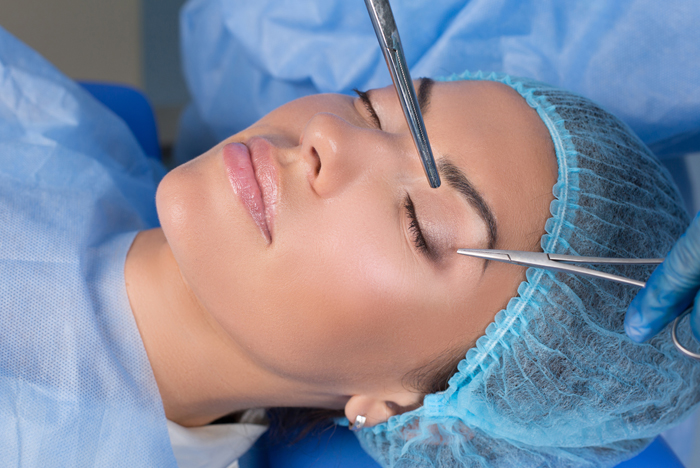Other Eye Surgeries & Care
Ophthalmology Associates offers treatment and care for eye surgeries including non-cosmetic Blepharoplasty or eyelid surgery, treatment of lid lesions, and care for Basal Cell Carcinoma.

BLEPHAROPLASTY
Blepharoplasty or eyelid surgery is a surgical modification of the eyelid. Excess tissue such as skin and fat are removed or repositioned and surrounding muscles and tendons may be reinforced. Blepharoplasty is often done as an elective surgery for cosmetic reasons, however Ophthalmology Associates specializes in non-cosmetic lid surgery for functional reasons.
When an advanced amount of upper eyelid skin is present, the skin may protrude over the eyelashes and causes a loss of peripheral vision. The outer and upper parts of the visual field are most commonly affected and the condition may cause difficulty with activities such as driving or reading. In this circumstance, upper eyelid surgery non-cosmetic blepharoplasty is performed to improve peripheral vision.
Blepharoplasty is usually performed through external incisions made along the natural skin lines of the eyelids, such as the creases of the upper lids and below the lashes of the lower lids. The operation typically takes one to three hours to complete. Initial swelling and bruising resolve in one to two weeks but several months are needed until the final result becomes stable.
The anatomy of the eyelids, skin quality, age and the adjacent tissue all affect the functional outcomes. During the first few weeks after a blepharoplasty, patients normally experience excessive tearing, light sensitivity and sometimes double or even blurred vision. The whites of the patient’s eyes can turn red or have red splotches. These symptoms usually disappear on their own within two or three weeks after the operation.
BASAL CELL CARCINOMA
Basal cell carcinoma is a type of skin cancer beginning in the basal cells—a type of cell within the skin that produces new skin cells as old ones die off. Basal cell carcinoma often appears as a slightly transparent bump on the skin, though it can take other forms. Basal cell carcinoma occurs most often on areas of the skin that are exposed to the sun, such as your head and neck.
Most basal cell carcinomas are thought to be caused by long-term exposure to ultraviolet (UV) radiation from sunlight. Avoiding the sun and using sunscreen may help protect against basal cell carcinoma—skin cancer on head or skin cancer on neck.
If you notice changes in the appearance of your skin, such as a new growth, a change in a previous growth or a recurring sore contact Ophthalmology Associates at 507-345-6151 to schedule an appointment.
Contact lEns Refills
REQUEST A REFILL FOR YOUR CONTACT LENSES TODAY!
We will contact you via phone or email to confirm your refill.
Meet Dr. Emily Birkholz
Dr. Birkholz specializes in cataract surgery, LASIK eye surgery, medical retina, glaucoma management and more.
Learn About LASIK
Our doctors have vast experience performing LASIK surgeries. We would be more than happy to provide further education on LASIK.
Special Financing Promos
We can help you get the vision care you want and need with CareCredit or Alphaeon convenient payment plans.
Request An Appointment
Ophthalmology Associates has been serving the greater Mankato area for over 50 years and our goal has been to provide our patients with the utmost in personal attention and the very best in eye care services. Contact us to set up your appointment today!
